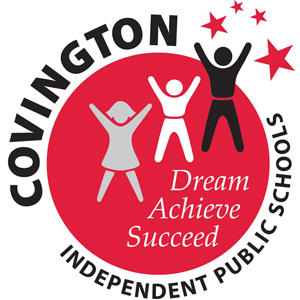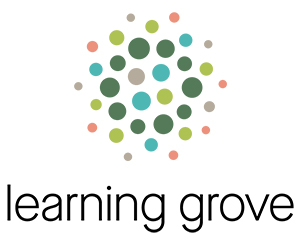Seven school districts in Northern Kentucky are celebrating a $5.2 million boost to literacy for the more than 8,000 children they collectively serve.
Working collaboratively through the Northern Kentucky Cooperative for Educational Services (NKCES), the Bellevue, Bracken County, Dayton, Erlanger-Elsmere, Silver Grove, Southgate, and Williamstown school districts secured the significant grant funding from the U.S. Department of Education’s Innovative Approaches to Literacy program.
The program promotes literacy activities and book distribution for children and students from birth through 12th grade in low-income communities.
The $5.2 million was awarded to support two related but separate grants:
River Country Readers divides more than $2.9 million among Bellevue, Dayton, Southgate, and Williamstown schools to serve more than 3,300 children. Of those, 2,833 are students in preschool through grade 12 at eight schools within those four districts, and an estimated 500 are children ages newborn to 3 years old. Bellevue Independent Schools is the fiscal agent for River Country Readers.
Reading Our Own Books provides $2.25 million to be shared among Bracken County, Erlanger-Elsmere, and Silver Grove schools to serve nearly 4,500 children. Of those, 3,974 are students in preschool through grade 12 at 10 schools within those three districts, and an estimated 500 are children ages newborn to 3 years old. Erlanger-Elsmere School District is the fiscal agent for Reading Our Own Books.
 “This grant award will provide literacy resources, technology, family engagement resources, and teacher training,” said Dr. Kathy Burkhardt, superintendent of Erlanger-Elsmere Schools. “At a time when state funding for education is being reduced and is at the same level as 2008, these much-needed resources will assist districts in providing research-based literacy instruction and student access to STEM opportunities.”
“This grant award will provide literacy resources, technology, family engagement resources, and teacher training,” said Dr. Kathy Burkhardt, superintendent of Erlanger-Elsmere Schools. “At a time when state funding for education is being reduced and is at the same level as 2008, these much-needed resources will assist districts in providing research-based literacy instruction and student access to STEM opportunities.”
The grants are the result of ongoing collaboration by leaders of the region’s school districts.
“This is an important grant for our communities and our kids as many kids today lack access to books and book ownership,” said Jay Brewer, superintendent of Dayton (Ky.) Independent Schools.
The U.S. Census poverty rate of each of the school districts benefiting from these grants exceeds 20 percent and is as high as 32 percent. Although schools provide proven reading instruction and interventions, research shows that literacy rates are impacted by this level of poverty and its associated challenges. Half or more of the students in these districts are reading below proficiency, with more than one in four students stalled in the novice status.
The grant projects will address these critical issues by expanding the number of usable books in each school library, increasing staff, and upgrading resources in libraries that include technology. For the schools that need a library management system, one will be installed and the library organized to maximize effectiveness. Library environments will be upgraded to enhance use of both books and technology to promote STEM learning.
“It is imperative that we get good books into the hands of our students, teachers, and even the parents,” said Greg Duty, Superintendent of Southgate Independent Schools.
“According to research, children in middle-income neighborhoods had multiple opportunities to observe, use, and purchase books – approximately 13 titles per child. Few opportunities were available for low-income children who, in contrast, had approximately one title per 300 children. This grant allows us to take an important step in improving access and opportunity for all children to learn and grow,” Jay Brewer, superintendent of Dayton (Ky.) Independent Schools. “
Need is great
While each of the programs were organized with flexible implementation in mind, both seek to address the same key literacy gaps:
*Enhancing school library resources
Grant funding will provide each participating district’s library with nearly $30,000 annually, supporting the addition of approximately 700 new books each year to enhance existing collections.
Annual district library budgets for all needs in these schools currently range from $500 to $5,535, and no budget comes close to meeting the recommended standard of $15 per student; in fact, the highest district currently spends just $5.70 per student on library resources.
All of the project’s libraries critically need book upgrades to increase student interest and availability of adequate resources. The average estimated age of collections is 25.9 years, and books on hand are ripped, taped, falling apart at the spine, missing pages, and torn from heavy usage and old age.
In addition, book-to-student ratios in project school districts average 20:1, below the national average of 21.8:1; one district’s ratio is as low as 9:1. Another district has had no library staff since 2002 and has no library management system; students in this district are not able to check out books unless their teachers get them.
*Providing children with their own books
These programs will provide each student with a broad range of his or her own books and accompanying activities to be integrated into everyday learning at school, at home, and in the community. Children ages birth to age 3, preschoolers, and kindergarten students will each receive a book monthly for the 10 months of the school year. To extend similar benefits to all children, each student in grades 1-5 will receive a book each quarter.
For students in grades 6-12, teachers at each school will design a menu of books, and youth will choose a book to suit their interests four times each year. This is critical, considering research has long documented the negative effect of poverty in language development in young children.
Schools estimated the average number of books in their students’ homes at 8 or fewer.
“According to research, children in middle-income neighborhoods had multiple opportunities to observe, use, and purchase books – approximately 13 titles per child,” said Dayton Superintendent Brewer. “Few opportunities were available for low-income children who, in contrast, had approximately one title per 300 children. This grant allows us to take an important step in improving access and opportunity for all children to learn and grow. We know that book ownership is important to children becoming life-long readers.”
*Ensuring reliable access to technology to support literacy and STEM learning
 The grant will address access to technology to support literacy and STEM learning that is essential to today’s learners by providing schools with a menu of options for technology, devices, software, and professional development that will allow them to meet their varying needs. For example, a district with no library circulation system will install an online management system. Districts where families have less access to the Internet will provide devices, hotspots for connection, and data access service cards to be checked out from the school library to complete class assignments and participate in online learning resources. Districts with no online resources available for supplementing literacy will be able to adopt them. Funding also will be provided to establish or expand makerspaces and to train teachers and media specialists to facilitate makerspace learning.While the impact of low literacy is felt in all subject areas, it is notably apparent in STEM areas. In these schools, nearly 60 percent of students score below proficient in science and closer to 70 score below proficient percent in math.Despite numerous resources and benefits to technology and online intervention, school libraries, where technology devices are housed, are not equipped to handle the new technology resources that are available and often technology and devices on-hand are outdated. The libraries’ computers are dated and inhibit student learning, especially in STEM areas. In fact, one district reported that more than half the computers are too poorly equipped for state assessment use.
The grant will address access to technology to support literacy and STEM learning that is essential to today’s learners by providing schools with a menu of options for technology, devices, software, and professional development that will allow them to meet their varying needs. For example, a district with no library circulation system will install an online management system. Districts where families have less access to the Internet will provide devices, hotspots for connection, and data access service cards to be checked out from the school library to complete class assignments and participate in online learning resources. Districts with no online resources available for supplementing literacy will be able to adopt them. Funding also will be provided to establish or expand makerspaces and to train teachers and media specialists to facilitate makerspace learning.While the impact of low literacy is felt in all subject areas, it is notably apparent in STEM areas. In these schools, nearly 60 percent of students score below proficient in science and closer to 70 score below proficient percent in math.Despite numerous resources and benefits to technology and online intervention, school libraries, where technology devices are housed, are not equipped to handle the new technology resources that are available and often technology and devices on-hand are outdated. The libraries’ computers are dated and inhibit student learning, especially in STEM areas. In fact, one district reported that more than half the computers are too poorly equipped for state assessment use.
In addition, students do not have consistent, reliable access to technology at home. As many as 70 percent of students lack home Internet availability capable of providing access to even a YouTube video. Even for students who do have home access to the Internet, it is likely to be intermittent, dependent on the family’s devices, data plan, and usage. Some districts report that the number of students without any home Internet access is as high as 28 percent.
Collaboration is key
The benefit of such grant funding being shared among multiple districts facing similar challenges is enormous, including leveraging shared resources and working together to establish best practices.
“When teams of educators believe that they have the ability to make a difference and that through their unified efforts they can overcome challenges and produce intended results, groups are more effective by uniting,” said Amy Razor, executive director of the Northern Kentucky Cooperative for Educational Services. “Each month the Grants Consortium (at NKCES) discusses local issues, builds human capacity by sharing ideas, and leverages resources to apply for grants that benefit students. The power of collective efficacy is demonstrated in the efforts of the NKCES Grants Consortium, and they are truly a group that is stronger together on behalf of students in Northern Kentucky.”
 The grants provide funding for an added staff member to lead the way in addressing literacy and STEM needs in each district. These staff members will be integrated in their schools’ culture and will guide changes needed to improve literacy education.
The grants provide funding for an added staff member to lead the way in addressing literacy and STEM needs in each district. These staff members will be integrated in their schools’ culture and will guide changes needed to improve literacy education.
In addition to providing a continuum of support throughout the school, the grants address all those who will touch a child’s literacy growth: they provide training and resources for libraries, teachers, and parents.
Support is significant
Since September 2010, the NKCES Grants Consortium has brought more than $50 million in federal, state, local, foundation and corporate funding into the Northern Kentucky economy in support of students in participating school districts.
In the Grants Consortium, representatives of 11 school districts meet monthly to network, to share information about current grant-funded projects, to learn about new opportunities and to plan collaborative grant proposals. The Consortium also expands each school district’s capacity to fund programming to meet its own needs by providing workshops or training events for school administrators, teachers or other staff members.
Northern Kentucky Cooperative for Educational Services




















